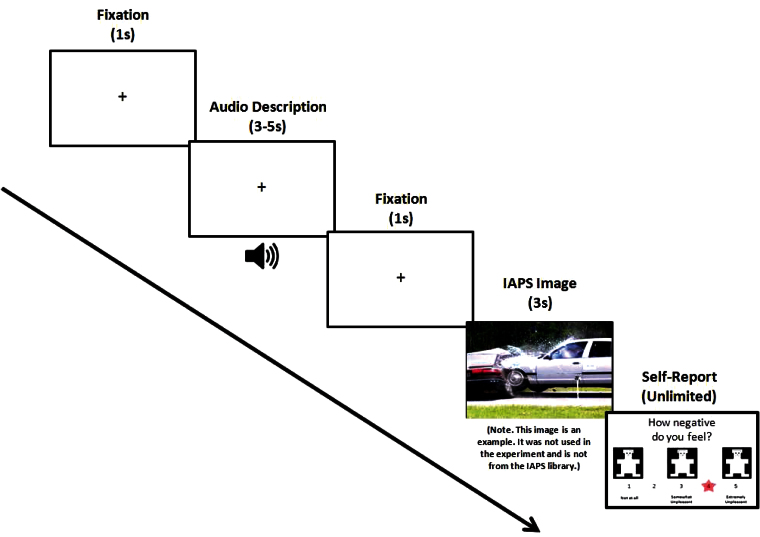Fig. 2.
Sample trial sequence. The paradigm used in this study developed by Foti and Hajcak (2008) involves an antecedent-focused (ie, strategy employed before the emotion has been triggered) and incidental (ie, descriptions alter affective response without intentional effort) emotion regulation manipulation. It was selected to provide a “purer” test of emotion regulation ability, where all subjects received the same quality of cognitive change strategies that were not dependent upon their own ability to voluntarily generate alternative descriptions. The sequence of emotional processes involved is likely to be that suggested in Gross’ model, such that after subjects have heard the appraisal provided by the audio file, they then attend to the image, appraise the image as either neutral or unpleasant, and then apply the context provided to them in the auditory description to reappraise the image as more negative or more neutral. Downregulation therefore occurs while the image is on screen and after the context has been applied to reinterpret the meaning of the image.

